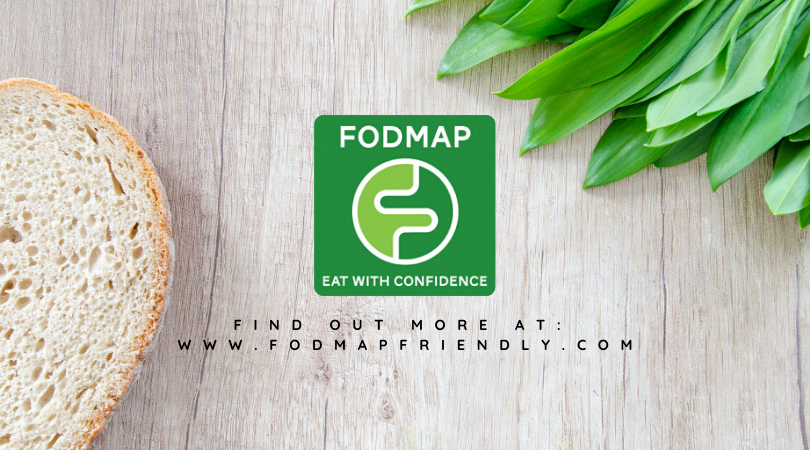Are oligosaccharides, the sugar in garlic, onion and wheat, causing your gut issues?
Posted on April 02, 2020
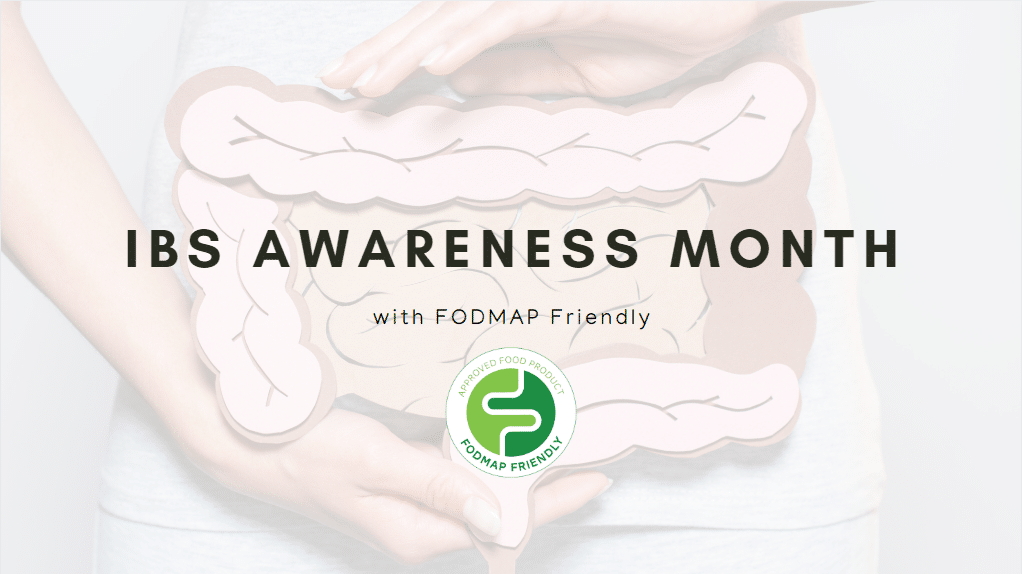
April Is IBS Awareness Month! Each month we will be doing a deep dive into each of the four FODMAP sugar groups.
As a refresher, FODMAP stands for:
Fermentable
Oligosaccharides
Monosaccharides
Disaccharides
And
Polyols
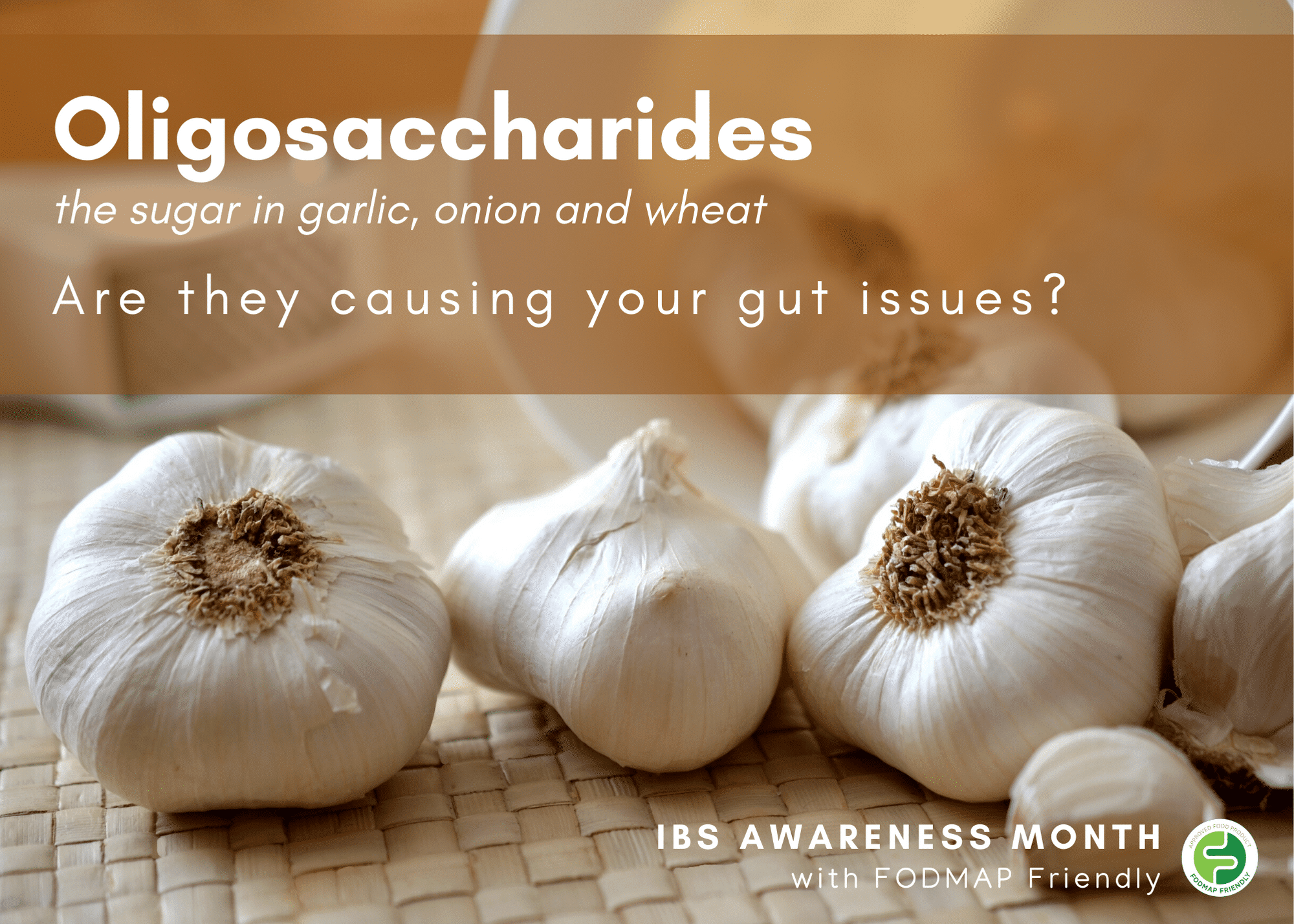
What are oligosaccharides?
The prefix ‘Oligo’ from Greek origin means few or small. The term ‘saccharide’ refers to sugar. So put them together and you have oligosaccharide, meaning a small chain of sugars. Don’t be fooled by this definition though, oligosaccharides may be a chain of short sugars, but they are not found in traditionally sweet foods. Some examples of foods that are high in oligosaccharides are garlic, onion, wheat and legumes.
There are two specific oligosaccharides that are highly fermentable:
- fructans (FOS) and
- galacto-oligosaccharides (GOS)
What is in oligosaccharides (fructans & GOS) that trigger IBS symptoms?
Our small intestines lack the enzyme required to breakdown oligosaccharides and therefore, fructans and GOS are not absorbed. Fructans and GOS then pass through the small intestine into the large intestine where they are fermented by gut bacteria, producing gases in the process. People with IBS tend to have heightened visceral hypersensitivity, which means they tend to have an enhanced perception of pain and discomfort triggered in the large intestine. Therefore, when excess gas is produced in the large intestine by fermentation of oligosaccharides, people with IBS tend to experience symptoms like painful cramping and bloating, whereas those without IBS, do not experience abdominal discomfort after consuming oligosaccharides.
Please note, that you may not always be sensitive to all oligosaccharides. Since fructans & GOS can cause different levels of gas production in the large intestine, you may find that you are able to tolerate one, or the other, or both quite well! That’s why it is important to complete the FODMAP challenges under the guidance of a FODMAP trained dietitian.
What are some foods that are high in Oligosaccharides (Fructans & GOS)? What are some low FODMAP substitutes?
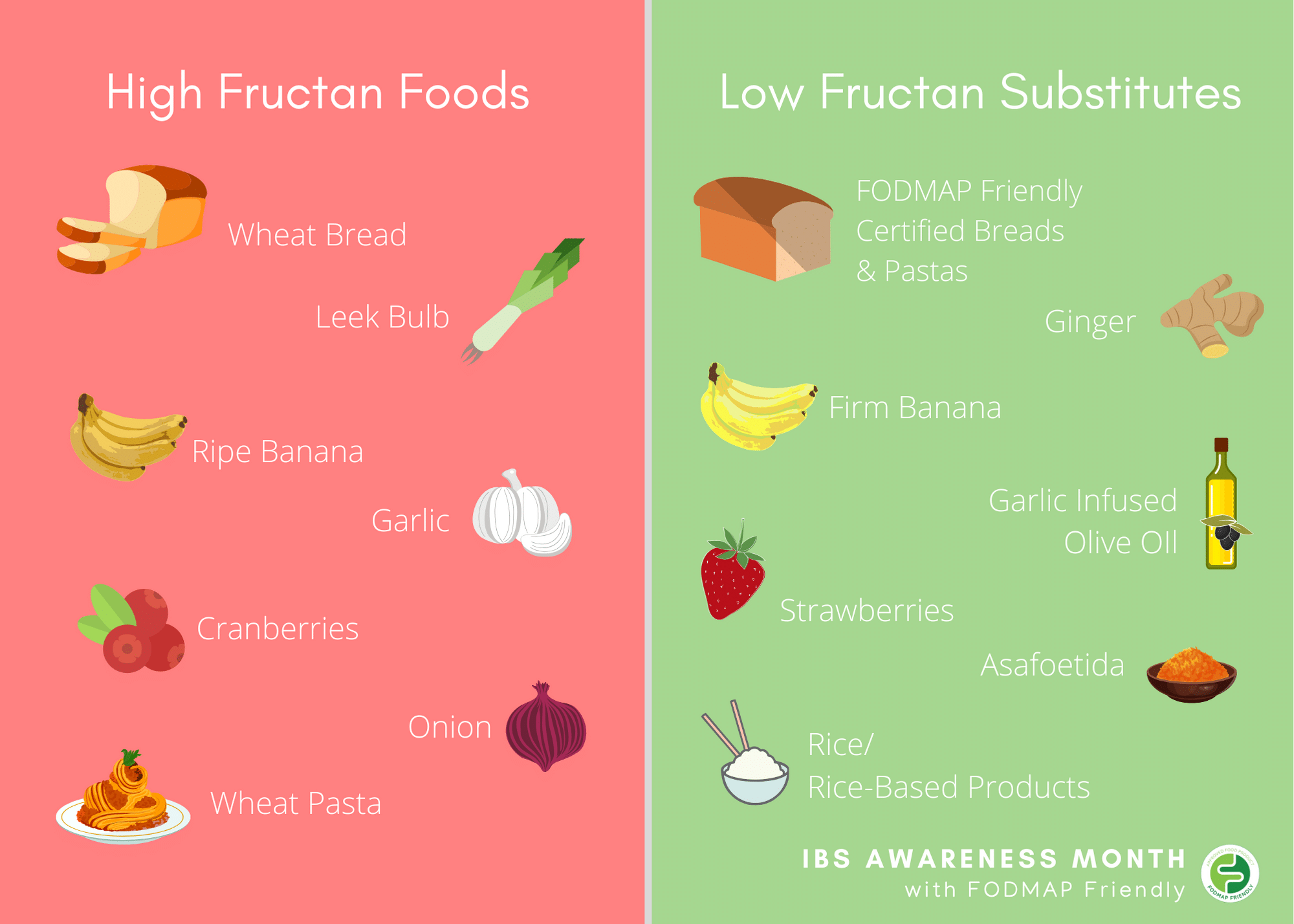
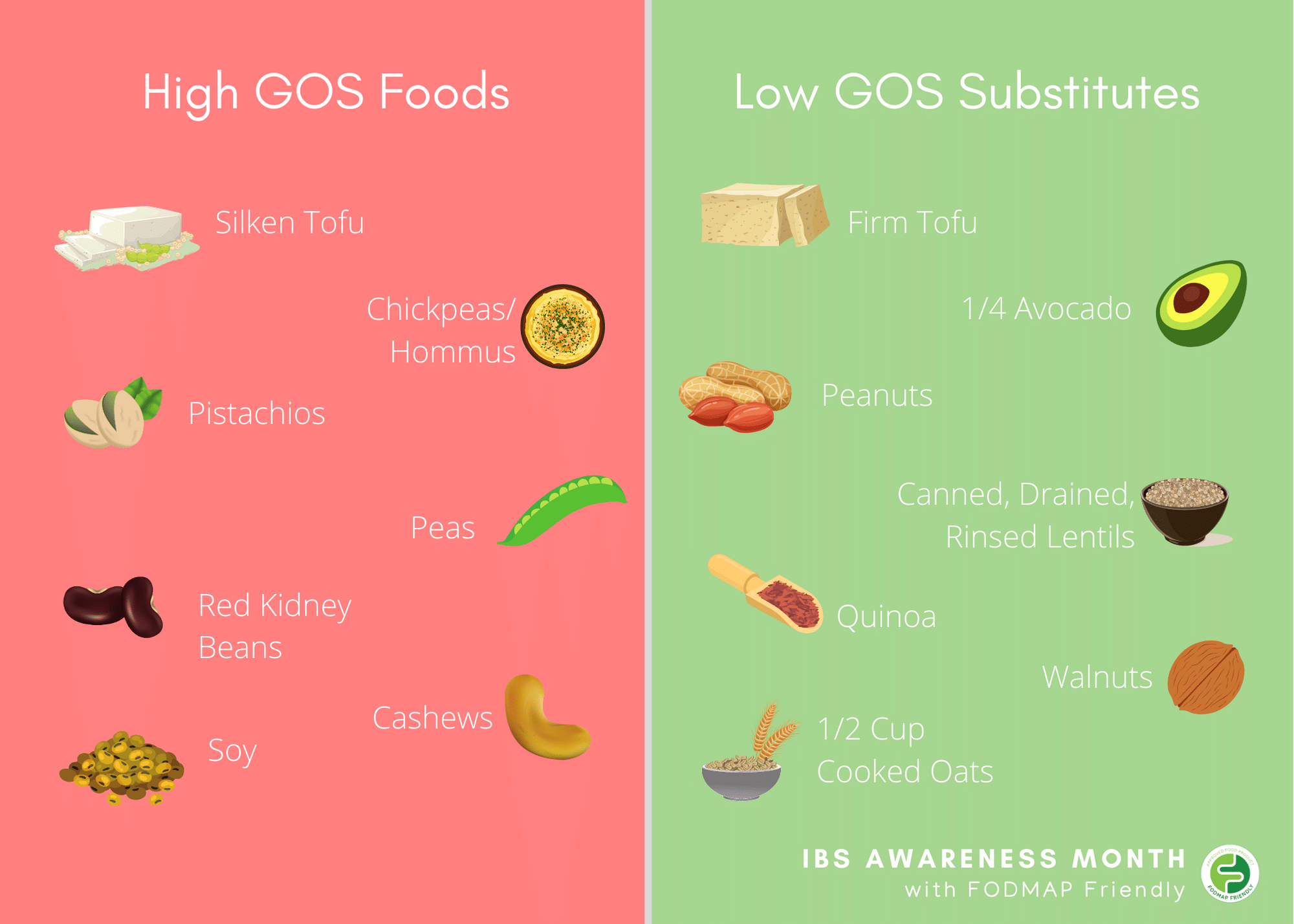
What nutrients are at risk for those who avoid foods high in fructans and GOS?
Fructans and GOS are both prebiotics. Prebiotics are good for our guts as they feed the bacteria and promote diversity which is linked to better health outcomes. Therefore, eliminating fructans and GOS from your diet can mean that you are not eating enough prebiotics to maintain good gut health. That is why it is important to chat to a FODMAP specialised dietitian before eliminating oligosaccharides from your diet. You could be unnecessarily excluding prebiotics from you diet, which could have an adverse effect to your gut microbiome diversity.
Your dietitian can provide you with some low FODMAP prebiotic foods to substitute into your diet if you have to avoid oligosaccharides to manage your IBS symptoms whilst also keeping your gut bacteria well-fed with prebiotics.
FODMAP Friendly Certified Products
To make it easier for you when following a low FODMAP diet, there are a wide range of FODMAP Friendly certified products that can be consumed safely, including breads, pasta, sauces, snacks, beverages, desserts and more. FODMAP Friendly certified products are not only low in fructans and GOS, but also low in all the other FODMAP sugar groups too. Visit https://fodmapfriendly.com/certified-products/ to browse the FODMAP Friendly certified products range.
If you have read our last blogpost on Everything You Need To Know About IBS, click here!
